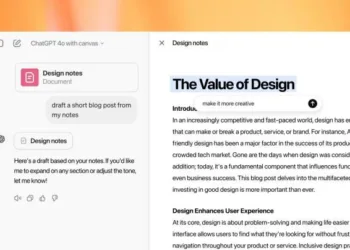Can ChatGPT Ads Be Personalized? Exploring Options
As artificial intelligence continues to shape the landscape of digital marketing, personalization has emerged as a crucial strategy for enhancing user engagement. This article delves into the capabilities of ChatGPT in terms of creating personalized advertisements, examining how this technology can be used effectively in marketing campaigns.
Understanding ChatGPT’s Functionality
ChatGPT is designed to generate human-like text based on prompts. Its adaptability allows marketers to leverage this technology for various applications, including ad creation. Here’s how ChatGPT can potentially personalize advertisements:
- User Interaction: ChatGPT can engage in real-time conversations, allowing advertisers to gather user data and preferences dynamically.
- Content Customization: It can tailor messages according to specific user profiles, interests, and historical interactions.
- Real-Time Adaptation: With the ability to analyze responses on the fly, ChatGPT can modify suggestions or offers based on immediate feedback.
Methods for Personalizing ChatGPT Ads
Different strategies can be employed to enhance the personalization of ads generated by ChatGPT:
1. Data-Driven Insights
Utilize analytics to guide ChatGPT in crafting personalized content:
- User Behavior Tracking: Monitor how users interact with previous ads to inform future messages.
- Demographic Information: Incorporate age, location, and preferences to create targeted advertisements.
2. Segmenting Audiences
Dividing the audience into specific groups allows for more tailored engagement:
- Interest Segmentation: Create distinct ads for different interests, such as travel, fashion, or technology.
- Engagement Tracking: Adjust ads based on how different segments respond to previous campaigns.
3. Dynamic Content Generation
Leverage the capability of ChatGPT to create unique content based on current trends:
- Seasonal Promotions: Generate ads that reflect current holidays or events relevant to the users.
- Trending Topics: Include contemporary issues or popular culture references to make ads more relatable.
Key Considerations for Effective Personalization
While personalization presents numerous advantages, certain factors should be considered to ensure success:
Privacy and Ethical Use
Maintaining user trust is paramount:
- Transparency: Clearly communicate how user data will be utilized in personalization.
- Opt-Out Options: Allow users to choose how much personalization they wish to receive.
Testing and Optimization
Constantly refine ads based on performance metrics:
- A/B Testing: Experiment with different versions of ads to see which resonates best with the audience.
- Feedback Loops: Use responses and engagement rates to improve future ad iterations.
Tools and Technologies Enhancing Personalization
Incorporating additional technologies can further improve ChatGPT’s advertising capabilities:
- CRM Systems: Integrate with Customer Relationship Management tools to gain deeper insights into user preferences.
- Recommendation Engines: Use algorithms that suggest products based on user history, enhancing the relevance of ads.
- Chatbots: Employ conversational agents to interact with users, collect data, and inform ChatGPT about user needs in real-time.
The Future of Personalized ChatGPT Ads
As the technology evolves, the potential for more advanced personalization strategies will increase. Preparing for this future involves:
- Investing in Advanced Analytics: Foster capabilities that allow for deeper insights into consumer behavior.
- Collaborating with Data Scientists: Work alongside experts to better understand machine learning models and how they can refine ad personalization.
The pathway for personalized ads using ChatGPT is promising and presents opportunities for brands to connect meaningfully with their audiences while maintaining the integrity of user engagement. By navigating the options for personalization carefully, businesses can harness the transformative power of AI in their marketing efforts.









